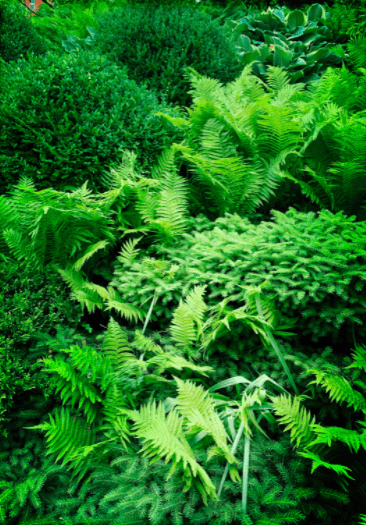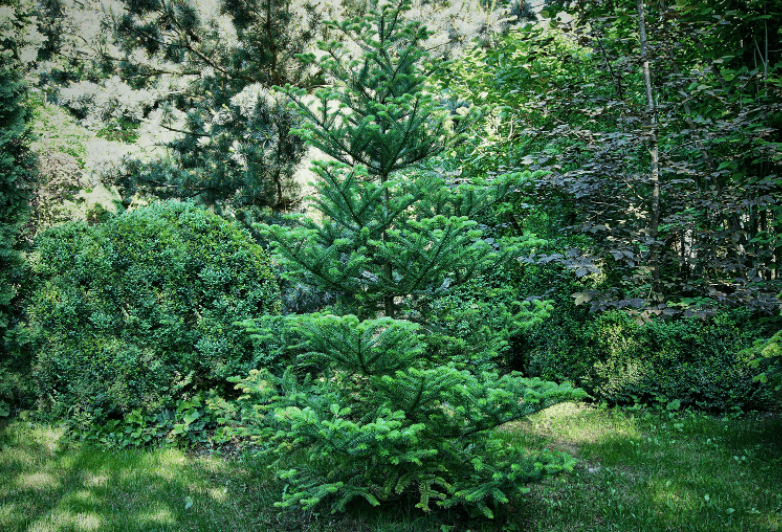DIY Evergreen Landscaping
Don’t let this time of year discourage you while planning your new property or upgrading the existing one. Evergreen Landscaping is an excellent choice to bring your garden to life even during the wintry days. A local company offers a wide range of landscaping services, but what if you could do it yourself?
Just take a drive around some established neighborhoods and enjoy the tenacity of the perennials, ornamental grasses, and deciduous shrubs. Many stand proudly to provide the last hoorah even in this cool weather.
What Are Evergreens
For most humans, the idea that occurs to mind when they reflect on evergreens is the huge ‘Christmas’ tree that sits on the front lawn.
An evergreen is simply a plant that keeps its foliage all year. This should not be confused with broadleaf evergreens. An evergreen has needle-like foliage (though not always, as in the case of cedars), whereas a broadleaf evergreen has more leafy or deciduous foliage.
Conifers are trees or shrubs that produce cones. These cones are especially popular during the holiday season when they are widely used to adorn interior and exterior decorations. Pine and spruce trees are the most well-known conifer varieties that bear cones.
Evergreens are excellent plants for year-round beauty, albeit nearly identical throughout each season. The variety of varieties and colors allows for a wide range of interest and, in many cases, low maintenance in the landscape.
They are generally considered a clean plant because they do not have an excessive flower, leaf, or fruit drop, even though they shed their needles.
And a word of caution: don’t stand under more giant evergreens when cones are being shed, or irate squirrels are racing through the bows — you might get a knock on the head!
The colors are spectacular and should have you primed and ready for the upcoming winter season with all its lights, glory, and glitz. Nothing gets a soul prepared better than to seek out eye-catching plants that highlight the gardens.
What Evergreens To Chose
Many deciduous shrubs and perennials hold interest well into the winter months with unusual branching, bark, seed heads, or, in the case of ornamental grasses, plumes.
Before they take refuge under a layer of white, many plants are worth considering when planning your new gardens this winter while curled up in front of a toasty fireplace.
Chrysanthemums can still be spotted throughout neighborhoods, and I recommend that you stop by a garden center or the floral department in a grocery store and pick up several pots of mums that are suited for indoors. Bring the outside in and create a flow-through of what might yet be a stark new home.
Until you establish your gardens, you can purchase various live potted plants to use throughout the house. Also, consider ‘greens’ for the fall and winter season that can be used in containers or vases and changed over several months.

As the days and evenings grow more relaxed, consider placing a grouping of mums around your front door. They will stay reasonably content in a protected alcove or porch for a little while yet.
I have a collection of colorful ones tucked on my porch. Once the plants are spent, they will be replaced with winter greens that I enhance with cuttings from my garden.
Many hydrangeas, ornamental grasses, evergreens, broadleaf evergreens, and deciduous shrubs continue to play a vital role in the indoor decor at this time. Annabelle and Pee Gee Hydrangeas, along with grass plumes, make terrific arrangements indoors, especially when spray-painted for the season.
Add a few stems of euonymus, some deciduous twigs, and long-lasting flowers, such as carnations, and you have created a very personalized arrangement for your new home.
If you don’t have any of your own yet, ask family members or friends if they might have some to share from their gardens until you establish your Landscaping.
Evergreen and berried or ornamental fruiting plants should also be considered in design plans for both outdoor and indoor use. Enjoy what Mother Nature still has to offer us before the snows flies, and have fun planning for your new home.
Space Consideration
When you consider evergreens for your Landscaping, be aware of the mature size of the tree you have chosen. Evergreens quite frequently come from the grower as a young plant and are usually of a small size.
Yes, they look cute standing in their five, 10, or 15-gallon container and are easily manageable for planting, but someday that little tree will tower 65 feet above the ground and will likely spread 16 to 20 feet across.
Considering today’s smaller lot sizes, once the driveway and walkway space is allotted, that evergreen may consume the rest of your front yard.
How often do you see an overcrowded garden of evergreens? When first installed, each plant likely stood prim and prospered independently. Eventually, though, many become a jungle of yews, upright and spreading junipers, spruce, or pine trees.
Deciduous shrubs are often scrunched in for variety, creating even more havoc.
It is not an attractive sight, nor is it healthy for the plants. Over time, there is no room to breathe. The plants cannot grow properly, and if one should die and need to be removed, the tree beside it will probably be barren of foliage on that side and remain unattractive as it will not likely recover its foliage.
A large selection of dwarf or shrub-sized evergreens is becoming more readily available these days in many forms and colors. They are the perfect solution for the smaller lot. I enjoy a garden of green, gold, and blue evergreens.
Colour Without Flowers
Why not! I do have clients, though, that believe an evergreen should be just that — green. However, if you are prepared to experiment, then the impact of the multi-color evergreen garden can be pretty exciting.
Unless used as hedging, I prefer evergreen shrubs to stand individually rather than clumped together. I will place them in groupings, but each has space to grow without touching adjacent plants.
Research the size that each evergreen will increase in diameter and be sure to leave enough room to allow for that growth without crowding. It doesn’t matter that it might take ten or twenty years to achieve its full size; the plants will be happier.
In the meantime, using annuals is an excellent method of filling in spaces and giving an additional splash of color. Just don’t use annuals that will sprawl all over the young evergreens. It is not suitable for the health of the evergreen, nor is it appealing to see the young plants buried below the annuals.
Evergreens Habits
Evergreens have diverse growing habits; some natural, others manufactured to shape by the grower. They can come as a spreader, horizontal spreader, upright, semi-upright, pyramidal, columnar, rounded form, vase-shaped, semi-vase shaped, globose, mounded, broadly mounded, prostrate, semi-prostrate, and compact.
Now, if that is not enough to confuse your choices, you can also choose from light green, bright green, dark green, silvery-green, grey-green, yellow-green, blue-green, blue, intense blue, steel blue, silvery-blue, yellow, golden-yellow, golden, golden-tipped, bronze and a purple tone in the fall.
You can have a veritable kaleidoscope of colors all year long! But be careful. Too much of a good thing is simply that — too much.
So, as you contemplate new Landscaping, keep the idea of evergreens in your mind, consider the best placement on your property, and join us next time to discuss some dos and don’ts, combinations, and special features of the evergreen.
Final Word On Evergreen Landscaping
Remember to buy quality, use quality, and hire quality as you begin your selection. And, if for any reason it might be too complex a task for you, perhaps it would be best to call in the professional Evergreen Landscaping company.


























